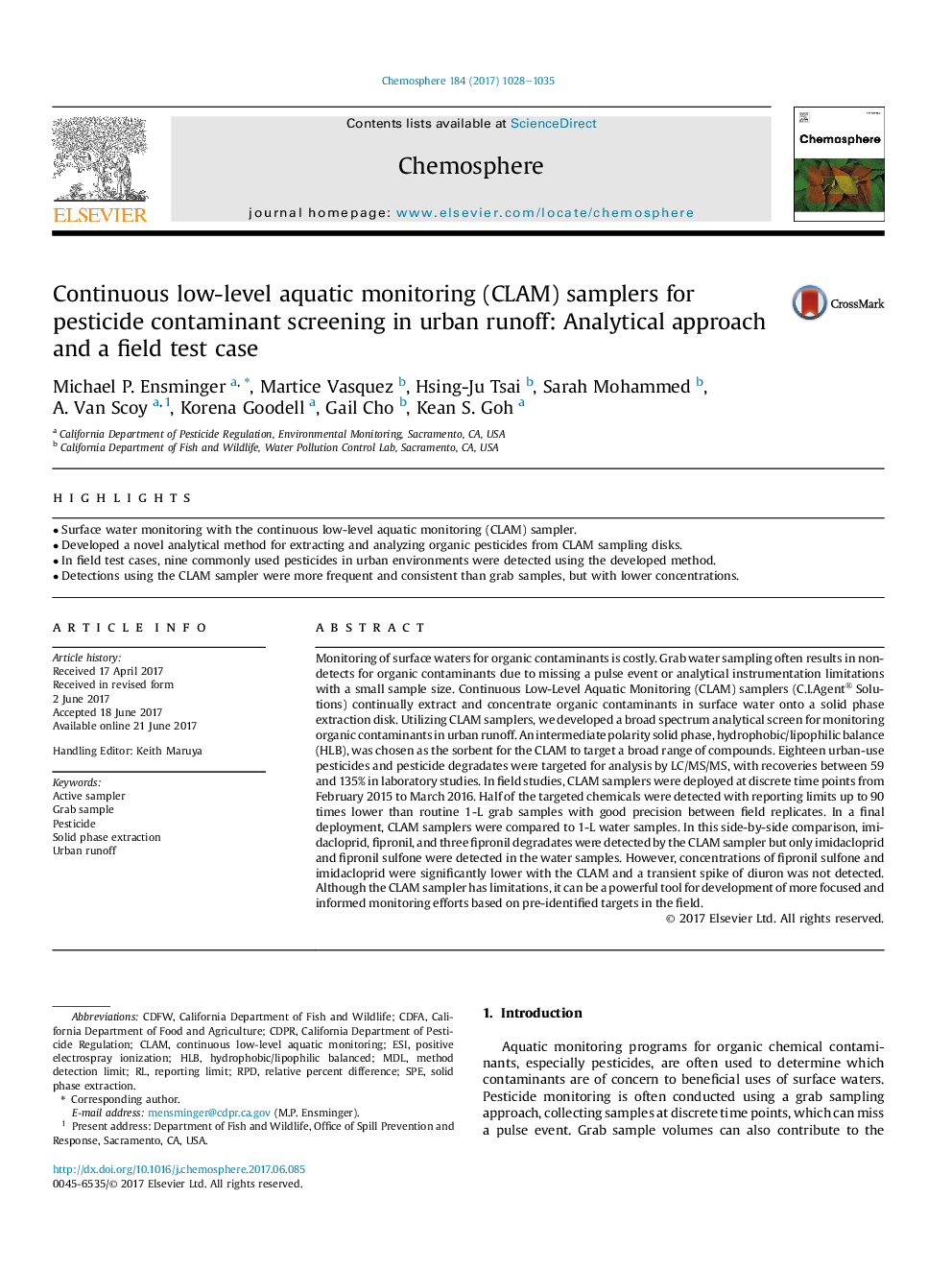| Article ID | Journal | Published Year | Pages | File Type |
|---|---|---|---|---|
| 5746225 | Chemosphere | 2017 | 8 Pages |
â¢Surface water monitoring with the continuous low-level aquatic monitoring (CLAM) sampler.â¢Developed a novel analytical method for extracting and analyzing organic pesticides from CLAM sampling disks.â¢In field test cases, nine commonly used pesticides in urban environments were detected using the developed method.â¢Detections using the CLAM sampler were more frequent and consistent than grab samples, but with lower concentrations.
Monitoring of surface waters for organic contaminants is costly. Grab water sampling often results in non-detects for organic contaminants due to missing a pulse event or analytical instrumentation limitations with a small sample size. Continuous Low-Level Aquatic Monitoring (CLAM) samplers (C.I.Agent® Solutions) continually extract and concentrate organic contaminants in surface water onto a solid phase extraction disk. Utilizing CLAM samplers, we developed a broad spectrum analytical screen for monitoring organic contaminants in urban runoff. An intermediate polarity solid phase, hydrophobic/lipophilic balance (HLB), was chosen as the sorbent for the CLAM to target a broad range of compounds. Eighteen urban-use pesticides and pesticide degradates were targeted for analysis by LC/MS/MS, with recoveries between 59 and 135% in laboratory studies. In field studies, CLAM samplers were deployed at discrete time points from February 2015 to March 2016. Half of the targeted chemicals were detected with reporting limits up to 90 times lower than routine 1-L grab samples with good precision between field replicates. In a final deployment, CLAM samplers were compared to 1-L water samples. In this side-by-side comparison, imidacloprid, fipronil, and three fipronil degradates were detected by the CLAM sampler but only imidacloprid and fipronil sulfone were detected in the water samples. However, concentrations of fipronil sulfone and imidacloprid were significantly lower with the CLAM and a transient spike of diuron was not detected. Although the CLAM sampler has limitations, it can be a powerful tool for development of more focused and informed monitoring efforts based on pre-identified targets in the field.
